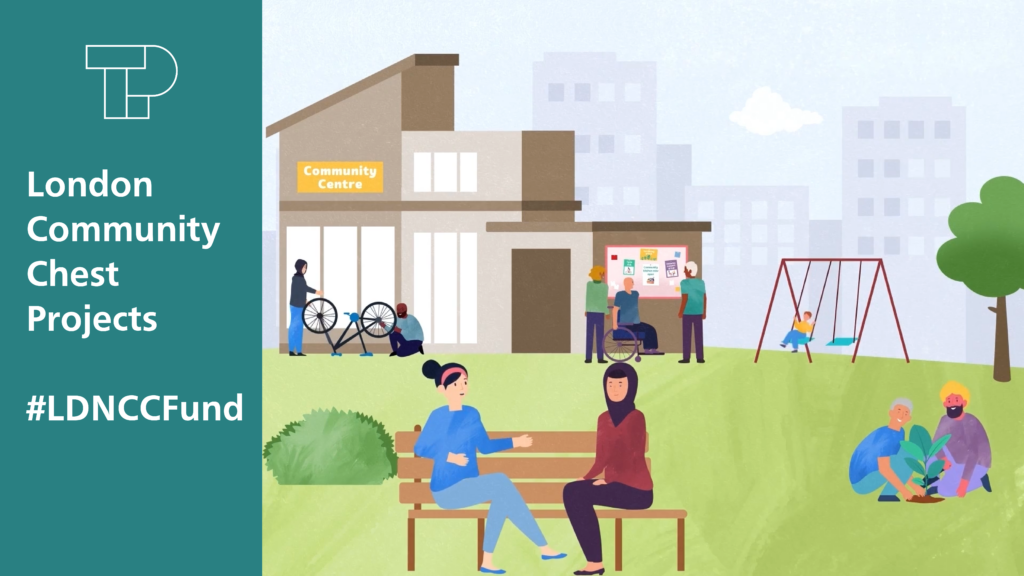Community Chests (Shared Investment Funds) workstream

This workstream aimed to:
- To support local systems to develop and implement a partnership approach to working with the VCFSE sector to fund and deliver preventative health and wellbeing activities
- To develop tools and resources to promote and support the uptake of the community chest approach by local areas
- To make the case and build the evidence base for shared investment funds and working in partnership with the VCFSE sector at a strategic and delivery level
Key impacts and achievements
- Successfully raised £500K awarded to 82 VCFSE organisations in NEL
- Supported over 7,000 residents to access health and wellbeing activities in NEL
- Pilots in NEL were so successful that some have received ongoing multi-year funding – these were pilots in boroughs: Barking and Dagenham, City and Hackney, Havering and Waltham Forest
Impacts on residents:
- Saw a statistically significant increase in wellbeing for residents accessing services
- People had improved health and wellbeing through support with social determinants such as loneliness and the cost of living
Impacts on VCSE organisations:
- Increased capacity or addressed gaps within services
- Small grassroots organisations accessed funding where they wouldn’t usually be eligible
- Many community chests were led in partnership, providing VCFSE organisations with the opportunity to develop new skills and build relationships to the NHS and local authority
Impacts on wider health and care system:
- Improved partnership working between statutory and non-statutory services, particularly between NHS, LA and VCFSE sector
- More people and organisations are aware of social prescribing
- Prevented residents from accessing GP or A&E services. A quarter of people would’ve attended the GP in Havering if they hadn’t accessed the activities
Why was this work important?
The VCFSE sector plays a fundamental role in tackling health inequalities by supporting people with the social determinants of health, preventing ill health or stopping health conditions from getting worse. Around 75% of VCFSE organisations deliver public services where they are based, having a closer link to communities, and engaging with residents more regularly than other statutory organisations.
To effectively tackle health inequalities, we need stronger partnership working between statutory and non-statutory bodies and to drive more funding towards the VCSFE sector to build on local assets addressing health inequalities.
The Community Led Prevention Team designed the Community Chest model to help overcome some of these challenges. Community Chests bring together key representatives from across a local community to work in partnership and use local intelligence to agree on funding priorities. Community chests can combine money from the NHS, the local authority, as well as other sources, such as philanthropy and local businesses to create an accessible funding pot for the VCFSE sector to support local activities.
Community Chests can foster integrated ways of working through place-based Partnerships (convening and combining investments by the NHS, local authorities and other stakeholders). They are designed to address health inequalities at both local and hyperlocal levels, responding to community intelligence and promoting sustainable outcomes for communities.
Community Chest pilots in NEL
The team worked with NEL ICB to pilot a community chest approach across each of the 7 boroughs of North East London. Each borough used a slightly different approach to implementing its community chest, ensuring that the funding priorities were aligned with the local population’s needs.
Over £500K has been allocated to 82 VCFSE organisations and the projects have ranged from delivering weekly basketball sessions for women to funding community fridges to supporting the immediate pressure from the cost-of-living crisis.
Main projects and outputs
Community Chest animated explainer video
Community Chest toolkit
Community Chest Independent evaluation
Community Chest pilots – impact reports
- Barking and Dagenham impact report
- City and Hackney impact report
- Havering impact report
- Waltham Forest impact report
- Redbridge impact report
- Tower Hamlets impact report
Community chest pilots – case study examples
Examples of similar approaches across London
- Connect for Health – an example community chest in Ipswich and East Suffolk
- Community Opportunities Small Grants Process – an example from Herts Valley CCG
- Enable and Wandsworth CCG
What have been the common challenges?
- Ongoing funding and sustainability of projects, and time-limited pilots – there often can be a lack of long-term commissioning of VCFSE organisations
- Existing power imbalances between statutory and non-statutory organisations – recognising and addressing historic power structures is difficult but necessary
- Disproportionate monitoring and evaluation, which can make grant funding opportunities inaccessible to grass-roots organisations
- Significant variation across boroughs/ICBs in funding for VCFSE organisations, and the role of VCFSE organisations within governance structures
What have been the key enablers?
- The newly formed VCSE alliances provide an opportunity to work in greater partnership with the VCFSE sector
- A renewed focus on neighbourhood working through the formation of INTs encourages statutory and non-statutory to work to meet the unmet needs of local residents
- Acknowledging and addressing existing relationships and power balances between statutory and non-statutory partners
Resources
Key external resources
- NASP report: ‘Envisaging a social prescribing fund’
- NHSE: ‘A framework for addressing practical barriers to integration of VCSE organisations in integrated care systems’
- King’s Fund report: ‘Actions to support partnership – Addressing barriers to working with the VCSE sector in integrated care systems’
- London Plus: ‘Commitments from the NHS to Engage with communities’
This section of the website represents the historical record of a legacy programme which is no longer managed by TPHC, as of mid 2025.
